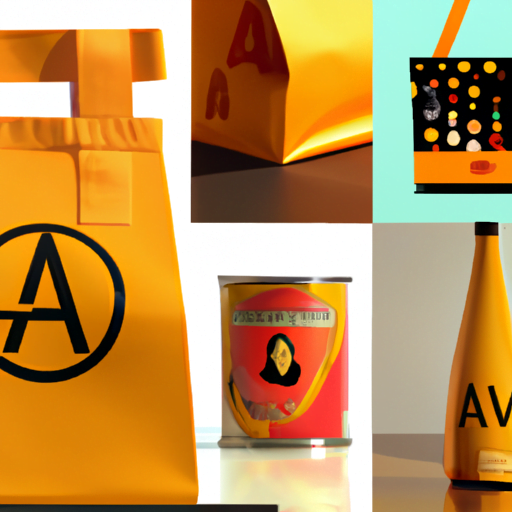
-
Table of Contents
- Crafting Packaging Designs for Sustainable Products
- The Importance of Sustainable Packaging
- Key Elements of Sustainable Packaging Design
- 1. Material Selection
- 2. Packaging Size and Weight
- 3. Eco-Friendly Printing and Labeling
- Case Studies: Successful Sustainable Packaging Designs
- 1. Method Home
- 2. Lush Cosmetics
- The Future of Sustainable Packaging
- Summary
Crafting Packaging Designs for Sustainable Products

As the world becomes more conscious of the environmental impact of consumer goods, businesses are increasingly focusing on sustainability. One crucial aspect of sustainable product development is the packaging design. Packaging plays a significant role in the overall sustainability of a product, from its materials to its end-of-life disposal. In this article, we will explore the importance of crafting packaging designs for sustainable products and provide valuable insights into creating eco-friendly packaging solutions.
The Importance of Sustainable Packaging
Sustainable packaging is not just a trend; it is a necessity in today’s world. Here are some key reasons why crafting packaging designs for sustainable products is crucial:
- Reducing environmental impact: Traditional packaging materials, such as plastic and non-recyclable materials, contribute to pollution and waste. Sustainable packaging aims to minimize this impact by using eco-friendly materials and reducing the overall carbon footprint.
- Meeting consumer demand: Consumers are increasingly seeking out products with sustainable packaging. According to a survey conducted by Nielsen, 73% of global consumers say they would change their consumption habits to reduce their environmental impact. By offering sustainable packaging, businesses can attract and retain environmentally conscious customers.
- Complying with regulations: Governments around the world are implementing stricter regulations on packaging waste and environmental impact. By proactively adopting sustainable packaging practices, businesses can stay ahead of these regulations and avoid potential penalties or reputational damage.
Key Elements of Sustainable Packaging Design
Creating sustainable packaging designs involves considering various elements that contribute to the overall environmental impact. Here are some key elements to focus on:
1. Material Selection
The choice of materials used in packaging has a significant impact on its sustainability. Here are some eco-friendly materials to consider:
- Recycled materials: Using recycled materials, such as recycled paper or cardboard, reduces the demand for virgin materials and helps divert waste from landfills.
- Biodegradable materials: Biodegradable materials, such as plant-based plastics or compostable materials, break down naturally and reduce the environmental impact.
- Minimalist designs: Designing packaging with fewer materials and simpler structures reduces waste and promotes sustainability.
2. Packaging Size and Weight
The size and weight of packaging directly impact transportation and storage costs, as well as the carbon footprint associated with shipping. Consider the following strategies:
- Right-sizing: Design packaging that fits the product snugly, reducing the need for excess materials and minimizing wasted space.
- Lightweight materials: Choose lightweight materials that maintain product integrity while reducing overall weight and transportation emissions.
- Stackability: Design packaging that can be easily stacked, optimizing space utilization during transportation and storage.
3. Eco-Friendly Printing and Labeling
The printing and labeling processes used on packaging can also contribute to its sustainability. Consider the following practices:
- Water-based inks: Use water-based inks instead of solvent-based inks to reduce volatile organic compound (VOC) emissions.
- Minimalist labeling: Opt for minimalist labeling designs that use fewer inks and adhesives, reducing waste and environmental impact.
- Recyclable labels: Choose labels made from recyclable materials to ensure they can be easily separated and recycled.
Case Studies: Successful Sustainable Packaging Designs
Examining successful examples of sustainable packaging designs can provide valuable insights into effective strategies. Let’s explore two case studies:
1. Method Home
Method Home, a cleaning products company, is known for its innovative and sustainable packaging designs. They introduced a line of hand soaps packaged in bottles made from 100% post-consumer recycled plastic (PCR). The bottles are also designed to be easily recyclable after use. Method Home’s sustainable packaging not only aligns with their brand values but also attracts environmentally conscious consumers.
2. Lush Cosmetics
Lush Cosmetics, a beauty and personal care company, is committed to reducing packaging waste. They have implemented several sustainable packaging initiatives, including their “naked” products. These products are sold without any packaging, or with minimal packaging made from recyclable or compostable materials. Lush’s sustainable packaging approach has resonated with their customers and helped position them as a leader in eco-friendly cosmetics.
The Future of Sustainable Packaging
The importance of sustainable packaging will only continue to grow in the future. Here are some emerging trends and innovations to watch out for:
- Bioplastics: The development of bioplastics, derived from renewable resources, offers a promising alternative to traditional plastics. These materials have the potential to reduce the environmental impact of packaging.
- Reusable packaging: The concept of reusable packaging, where customers return packaging for refilling or reuse, is gaining traction. This approach reduces waste and encourages a circular economy.
- Smart packaging: Advancements in technology enable the integration of sensors and indicators into packaging, allowing consumers to monitor product freshness and reduce food waste.
Summary
Crafting packaging designs for sustainable products is essential for businesses looking to reduce their environmental impact and meet consumer demand. By focusing on material selection, packaging size and weight, and eco-friendly printing and labeling, companies can create packaging that is both functional and sustainable. Successful case studies, such as Method Home and Lush Cosmetics, demonstrate the positive impact of sustainable packaging on brand reputation and customer loyalty. As the future of sustainable packaging unfolds, innovations like bioplastics, reusable packaging, and smart packaging offer exciting possibilities for further reducing the environmental footprint of consumer goods.
